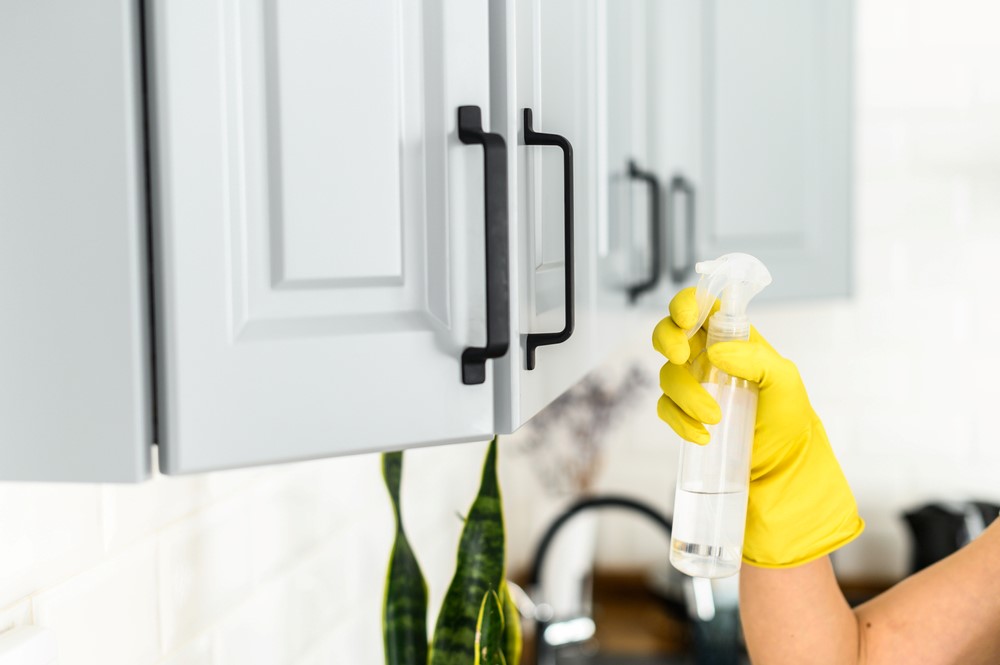Being the focal point for every kitchen, dirty cabinets are easy to spot. This is not surprising because cabinets do not receive the same attention as the counters, sinks and floors when it comes to regular cleaning. This is despite the fact that they receive everyday food splatters, water marks, grease, dust and fingerprints.
The problem is even bigger when the dirt accumulate overtime creating sticky situations that are a nightmare to clean. Dirty kitchen cabinets also pose a health risk because bacteria like salmonella can contaminate the entire food prep area.
Cabinet cleaning schedule
In order to maintain your cabinets and keep them clean, you need to have a cleaning schedule that alternates between general cleaning and deep cleaning. With a constant weekly general cleaning, you’ll only need to deep clean occasionally.
How to do a general cleaning of your cabinets
Start by collecting the cleaning equipment and materials that you need. These are cleaning cloths, a soft- bristled brush, dish soap, vinegar or a warm water solution and a special cabinet cleaner like orange oil. Optionally, you might need a vacuum, baking soda and an all-purpose cleaner. The basic cleaning solution for all cabinet materials is a solution of dish soap and warm water or white vinegar and warm water. Unlike the majority of all-purpose cleaners, these solutions remove most of the food smudges, dust and grease buildup without damaging the cabinet’s finish.
Spray the solution directly onto the surfaces or onto the cleaning cloth and wipe the cabinet surfaces from top to bottom. Remember not to soak the cabinets as too much moisture can damage the finish. Also, don’t let the water run into the hinges to avoid rust.
Once the cabinets are wiped clean, remove the cleaner with a final rinse using a lightly dampened clean cloth. Finally, use a dry soft cloth to wipe all the cleaned surfaces dry. Don’t let them air dry because it can bubble the finish or paint. Clean the glass and metal hardware thereafter.
Cleaning tough spots
When your cabinets have sticky yellowish or orange grease grime, dried grunge or other food stains on them, it can be hard to remove it with dish soap or a vinegar solution. In this case, apply orange oil cleaner and let it sit for a few minutes before scrubbing with a soft brush. You can also apply a paste of baking soda, salt and water then scrub the area with an old toothbrush.
Deep cleaning your kitchen cabinets
Deep cleaning of kitchen cabinets can be done at least twice a year. This means emptying of the cabinets entirely before cleaning them in and out using the procedures outlined for general cleaning. This is also the time to clean the cabinet contents and throw away anything that is expired, heavily chipped, cracked or missing a lid.
After cleaning your kitchen cabinets, try to maintain the cleanliness by cleaning spills as they happen with a sponge or damp cloth. To protect from future stains, apply a mixture of vegetable oil and vinegar lightly on the cabinet surface then rub with a soft cloth until it shines.
For further advice on your kitchen cabinets or next home improvement project, give the professionals at Nuzum Building Supply a call!

